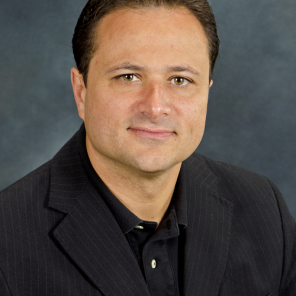
José A. Lemos obtained his Ph.D. in Microbiology and Immunology from the Federal University of Rio de Janeiro, Brazil. He did postdoctoral research at the University of Rochester when he became interested in studying the stress response mechanisms of low-GC Gram-positive bacteria. He started is academic career as a Research Assistant Professor in the Department of Oral Biology at the University of Florida. In 2007, he joined the faculty of the University of Rochester in the Center of Oral Biology. In 2015, he returned to the University of Florida where he is currently an Associate Professor in the Department of Oral Biology. His laboratory investigates the stress survival mechanisms of Gram-positive pathogens with a particular focus on the dental pathogen Streptococcus mutans and the opportunistic nosocomial pathogen Enterococcus faecalis. He is currently a member of the Bacterial Pathogenesis (BACP study section from the National Institute of Health (NIH), and the Principal Investigator of multiple NIH-funded grants from the National Institute of Dental and Craniofacial Research (NIDCR) and the National Institute of Allergy and Infectious Diseases (NIAID).
How did you first learn about the AADR and what motivated you to join?
I learned about AADR late because my degree was in biology, and it wasn’t until I joined an oral microbiology lab in my first year as a post-doc that I started to attend AADR annual meetings. The opportunity to share ideas and network with the top researchers in the field motivated me to join. This was a relatively new environment for me, and I wanted to get to know my peers on a face-to-face basis.
Can you describe your research? How do you hope your work will impact others?
My lab works on opportunistic gram positive pathogens specifically the caries-causing bacteria Streptococcus mutans and a common opportunistic pathogen named Enterococcus faecalis. In addition to being a common nosocomial [hospital-acquired] pathogen, E. faecalis is also highly prevalent in root canal infections. In both cases, my lab investigates the molecular mechanisms that allow these bacteria to survive under adverse (stressful) conditions. In the case of S. mutans, we focused initially on acid stress responses but also devoted a lot of attention to oxidative stress responses of this organism. We have found that the ability of S. mutans to survive oxidative stresses is as important, if not more, to S. mutans virulence as acid stress survival. By understanding how these bacteria survive under adverse environmental conditions, we hope we can identify targets for new therapeutics.
Can you tell a story or give an example of how cross collaboration with other scientific disciplines has been important to your career?
I come from a medical school background so for me getting the opportunity to work at a dental school and interact with dental clinicians gave me a completely different perspective of the devastating consequences of oral diseases. As basic scientists, we often fail to have a full grasp of the diseases we were investigating until we work more closely with clinicians.
Can you describe your experience being a researcher from an underrepresented group in science?
I have been very fortunate to be surrounded by faculty, mentors and staff who are very supportive to URMs. In my case, I am from Latin America and yes the language barrier is one of the many obstacles that I had to overcome a real problem but I have been fortunate not really experience that. The places I have spent most of my career – University of Rochester, N.Y. and currently at University of Florida, Gainesville – have been extremely supportive. Both schools are known to encourage the participation of URMs.
Have you had the opportunity to mentor underrepresented minorities (URMs) or work to increase diversity in science? If yes, can you describe your experience and what agencies/organizations you worked with?
I have mentored a lot of people over the years, from undergraduate and graduate students to postdocs and visiting scholars. About half of my previous and current students were or are URMs, thanks in part to the institutions where I worked that have excellent programs for URMs, in particular summer internships. Another great example was the University of Rochester partnership with institutions like the University of Puerto Rico to have a confluence of URMs. I also think that being a URM myself, I’m like a magnet, and URM students gravitate towards me. A lot of times they come to me looking for an opportunity and I think it has something to do with being able to relate with one another. The URM mentees that have passed through my lab were highly very motivated, smart and are doing very well with their careers whether in academia or industry settings. To learn about their successes has been extremely rewarding.
Based on your experience, how would you encourage AADR members to help increase the diversity of the research workforce?
By being supportive of research programs that target URMs. I think if you have a large research enterprise and have 10 people working in your lab and none of them are from an underrepresented group then maybe it’s time to ask yourself what can you do to attract more URMs to your lab. They are out there waiting for an opportunity! We should all be more proactive.
What role do you think professional associations can play in supporting its members who are members of underrepresented minority/ethnic groups?
The associations are in an excellent position to implement programs that support and encourage the participation of URMs. This could be done by particularly targeting URM schools and creating fellowship opportunities. A lot of the time these URMs come from low income families so associations could offer fellowships that provide a stipend for low income students (perhaps for low income students in general) to receive research training. Finally, I think professional associations must foster an environment that is supportive and protective of URMs, which I believe AADR is doing a very good job of.




